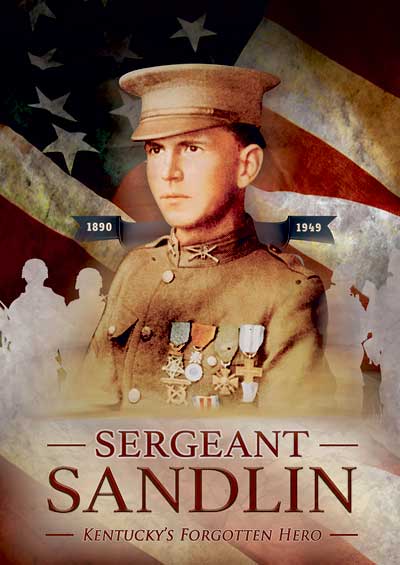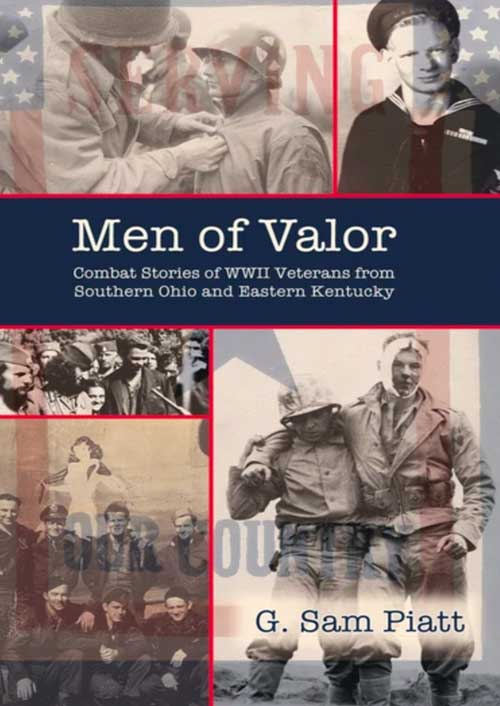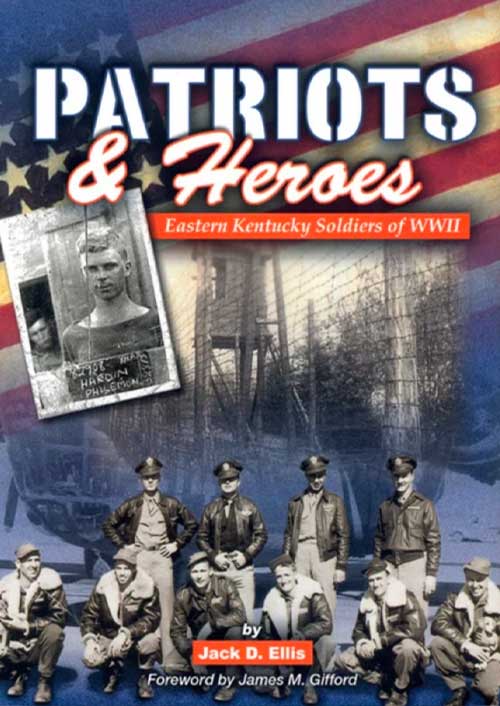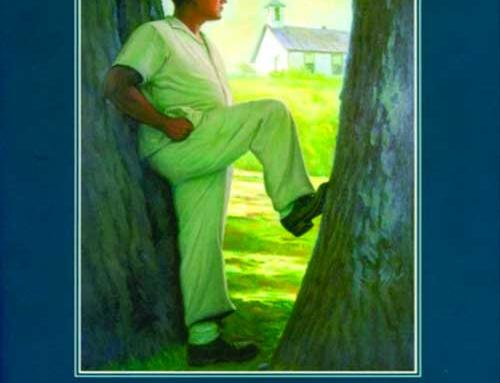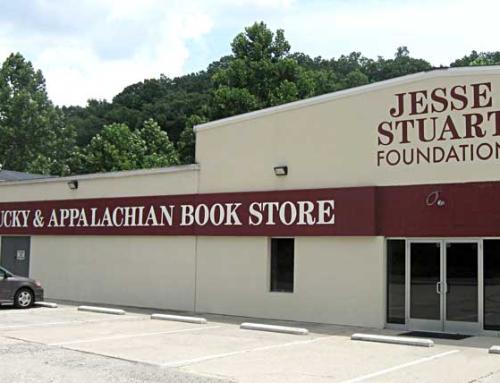Historically, the people of Appalachia have played a major role in fighting for and defending America’s freedoms. From colonial times to our current war against terrorism, Appalachian men and women have been at the forefront of battle.
Soldiering was easy for Appalachian people because their life experiences often provided the skills necessary for survival and success. They came from a rugged, agrarian background that prepared them for the hardships of military life. Most were able marksmen. They could outmarch and outride their urban counterparts. They were comfortable out of doors and accustomed to living off the land. In many respects, soldiering was easier than the life of grinding work and economic privation that many of them returned to at the end of every war.
In the Revolutionary War, “the over the mountain men” from the Watauga settlement in what is now east Tennessee helped to defeat the British at Kings Mountain in western South Carolina in 1780. The colonists won their independence on fields of battle, and Appalachian marksmen contributed to every American victory. Four decades later, America fought another war for independence. Although history books often present the War of 1812 as the military version of a comic opera, the fact remains: we were fighting the British again, and, if they had won, we would have lost our hard-earned freedoms and probably returned to colonial status. Andrew Jackson, the hero of the War of 1812, was a prototypical backwoodsman who symbolized a new age in American history and rode the wave of his popularity as the hero of the battle of New Orleans to the White House in 1828.
As the antebellum period continued, men from Appalachia continued to play a major role in our military efforts. In 1836, the heroes of the Texas War for Independence were men like Jim Bowie and Davy Crockett. Ten years later, Uncle Sam beat the drums of war again, and a new generation of mountaineers marched forth to help us win the Mexican War. Tennessee is called the Volunteer State because of the high incidence of volunteerism that began with the Mexican War and continued into the twentieth century. Throughout Appalachia, many mountain counties met their draft quotas in World War I and World War II entirely through volunteers.
The colonial wars, the American War for Independence, and the continuing conflicts of the antebellum period paled to insignificance compared to the Civil War, which was often fought in the heart of Appalachia. Appalachians served with bravery and distinction on both sides. When the war ended, no section of America had suffered more than Appalachia.
Before the Civil War, the people of Appalachia had been prosperous, independent, prideful, and literate. Following the Civil War and Reconstruction, those same individuals – primarily Republicans who had supported the North – suffered political and economic discriminations when the Democratic party regained control of the governments of southern states. Southern Appalachia became the poor back yard of southern states: eastern Kentucky, for example, or northeast Georgia. By the beginning of the twentieth century, Appalachia was an island of poverty in a national sea of plenty.
Historical circumstances worked against our region in the nineteenth century, but historical events of the twentieth century would help Appalachia rebuild its quality of life. For example, World War I provided gainful employment for tens of thousands. As was often the case, an Appalachian soldier became the hero who captured the popular imagination. Alvin York, a mountain boy from Tennessee’s Cumberland plateau, went out on patrol in 1918 and singlehandedly killed twenty-five Germans with twenty-five shots and returned with 132 German soldier captives. The men who surrendered to York had twenty-five machine guns among them. When York marched his captives to division headquarters, his commander remarked, “Well, York, I hear you have captured the whole damn German army.” York saluted and modestly asserted, “No sir, I just got 132 of them.”
Kentucky produced a number of heroic soldiers like Alvin York. On September 26, 1918, Sergeant Willie Sandlin from Leslie County, acting alone, attacked and disabled three German machine gun nests and killed all twenty-four occupants. Like York, Sandlin received the Medal of Honor.

Willie Sandlin
Another Eastern Kentuckian, Peter McCoy of Pike County, fought his way into a German trench, killed seven enemy soldiers, and captured seventeen more. At the end of the battle, his uniform and the pack on his back bore dozens of bullet holes. McCoy was one of eight men from his company who survived this battle. For his valor, McCoy was awarded the Distinguished Service Cross.
Three decades later Appalachian men and women helped America fight a two-front war that spanned the entire globe. Franklin Sousley, from Fleming County, was one of the six men who raised the flag on Mount Suribachi at Iwo Jima. Sousley was killed in action three weeks later, but many of his Appalachian brothers and sisters returned to a hero’s welcome. More importantly, they derived the educational benefits of the G.I. Bill, and used their education and training to revitalize the quality of life in their Appalachian homeland.
Another famous – albeit indirectly – Eastern Kentucky soldier of the World War II era was Robert Lee Stewart of Letcher County. Stewart served in “F” Company, 27th Infantry regiment of the 25th Infantry Division. Soldiering with him was James Jones, a young man from Robinson, Illinois, who later wrote a trilogy of WWII novels: “From Here to Eternity,” “The Thin Red Line,” and “Whistle.” In each novel, a principal character is a heroic rifleman from Appalachia. Although Jones give him a different name in each novel, all three were modeled after Stewart. In a letter to his famous editor, Maxwell Perkins, Jones saluted Stewart’s alter ego, Robert E. Lee Prewitt, as a man of “intense personal pride.” Later, he described the Stewart/Prewitt character as an example of Appalachian combat soldiers and observed, “I have seen such men do absolutely unbelievable things in combat.” Through his fictional persona, Robert Lee Stewart became a symbol for the Appalachian soldiers of World War II, just as Alvin York and Willie Sandlin represented mountain soldiers of World War I.
Sadly, the war to make the world safe for democracy and the war to end all wars did not eliminate international warfare, and throughout the rest of the twentieth century Appalachian men and women marched forth to serve their country in Korea, Vietnam, and the Middle East. On July 22, 2003, U.S. Army Private Jessica Lynch, a prisoner of war who was rescued from an Iraqi hospital by U.S. Special Forces, received a hero’s welcome when she returned to her hometown of Palestine, West Virginia. The story of the 19-year-old supply clerk, who was captured by Iraqi forces, had captivated America, although it was later revealed that some of the details of Lynch’s dramatic capture and rescue had been exaggerated.
Research by East Tennessee State University’s Pat Arnow and Bert Allen, a professor of Psychology at Milligan College, indicates that Appalachian soldiers in the Korean War comprised eight percent of the fighting force and received eighteen percent of the Medals of Honor. In the Vietnam War, Appalachian soldiers were awarded thirteen percent of the Medals of Honor, although only seven percent of the fighting forces were from the Appalachian region.
Kentucky’s John M. Trowbridge, a freelance military historian, has compiled a list of ninety-three men and one woman with ties to Kentucky who have received the Medal of Honor; twenty are from the Appalachian counties. In the Korean War, all five of Kentucky’s Medal of Honor recipients were from Appalachia: Captain William E. Barber of Morgan County; Corporal John Walton Collier of Greenup County; First Lieutenant Carl H. Dodd from Harlan County; Private David M. Smith from Rockcastle County; and Private First-Class Ernest Edison West from Greenup County. These statistics testify to the significant role that Appalachian people have played in America’s military history, but statistics alone can never completely capture the enormous contribution these men have made.
We began another century of American life with many of the same sad themes of our past. Americans continue to fight for the freedoms that we won on the field of battle in 1776, and the people of Appalachia continue to play a major role in our military efforts.
Ask old soldiers about heroes, and they will tell you that the real heroes are the men and women who did not return. They were young people in an enemy’s land, far from home and the people they loved. They wanted to live. They wanted to come back home, marry, build a home and a life. But they paid the ultimate price for the freedoms and privileges that we Americans enjoy today.
All of us owe a great debt to America’s soldiers. Every one of us should sit down and make a list of the freedoms we love and the comforts we enjoy. Look at your list. It’s a copy written in ink. The original was written in the bright red blood of an American soldier.
This essay does not – and could not – provide the story of each of our region’s patriots and heroes. The men and women described here march through these paragraphs as representatives of every Eastern Kentucky patriot and hero, just as every Eastern Kentucky soldier represents soldiers from many other states.
Looking back on Appalachia’s role in American military history, we can easily overemphasize the popular heroes like Andrew Jackson, Davy Crockett, and Alvin York and not provide enough praise for the thousands and thousands of other men and women who served their country quietly and bravely. This essay is a testimony to unrecognized heroes. It honors every man and woman from Appalachia who served our country. They were patriots for what they did, and heroes for what they were willing to do.
Patriots and heroes, I salute you.
Author’s Note: For the purpose of this essay, I use the word soldier to mean any man or woman who served in any of America’s armed forces. An edited version of this article first appeared in the November 2020 issue of Kentucky Monthly.
By James M. Gifford
JSF CEO & Senior Editor
See these related books
- Sergeant Sandlin: Kentucky’s Forgotten Hero by James M. Gifford
- Patriots & Heroes: Eastern Kentucky Soldiers of World War II by Jack D. Ellis
- Men of Valor: Combat Stories of WWII Veterans from Southern Ohio and Eastern Kentucky by G. Sam Piatt


